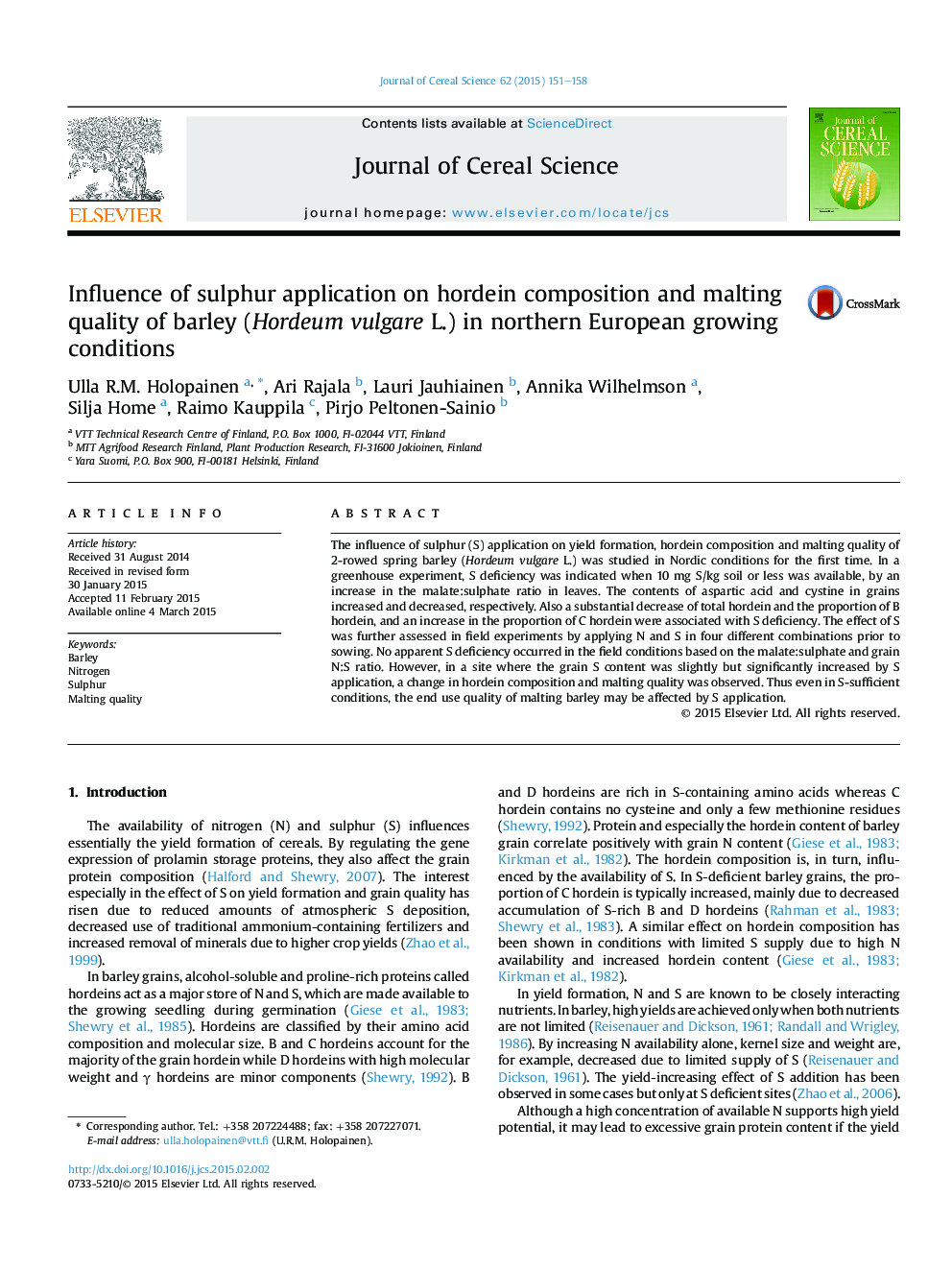| Article ID | Journal | Published Year | Pages | File Type |
|---|---|---|---|---|
| 4515736 | Journal of Cereal Science | 2015 | 8 Pages |
•The effect of S application prior to sowing on barley was demonstrated.•In greenhouse, clear changes in hordein composition were observed.•No apparent S deficiency occurred in the field conditions.•In a S-responsive site, hordein composition and malting quality were affected.•End use quality of barley may be affected by S application without S deficiency.
The influence of sulphur (S) application on yield formation, hordein composition and malting quality of 2-rowed spring barley (Hordeum vulgare L.) was studied in Nordic conditions for the first time. In a greenhouse experiment, S deficiency was indicated when 10 mg S/kg soil or less was available, by an increase in the malate:sulphate ratio in leaves. The contents of aspartic acid and cystine in grains increased and decreased, respectively. Also a substantial decrease of total hordein and the proportion of B hordein, and an increase in the proportion of C hordein were associated with S deficiency. The effect of S was further assessed in field experiments by applying N and S in four different combinations prior to sowing. No apparent S deficiency occurred in the field conditions based on the malate:sulphate and grain N:S ratio. However, in a site where the grain S content was slightly but significantly increased by S application, a change in hordein composition and malting quality was observed. Thus even in S-sufficient conditions, the end use quality of malting barley may be affected by S application.
